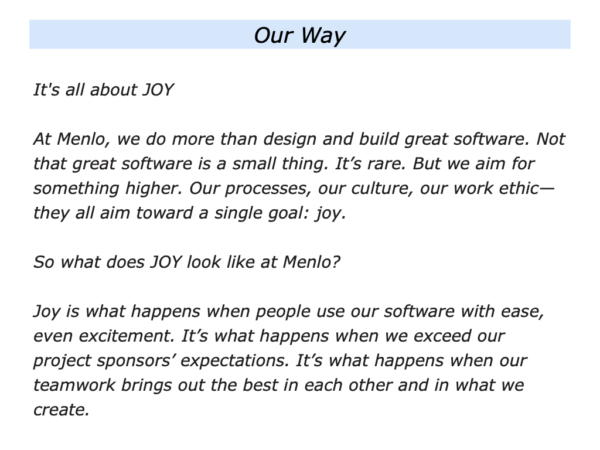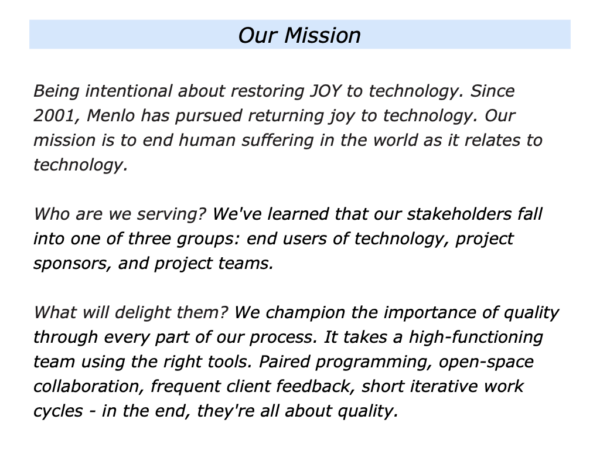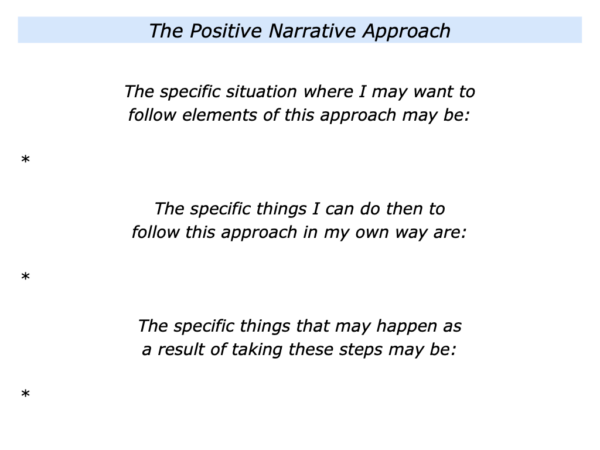
Good leaders recognise that they may sometimes need to be good communicators. They need to communicate a positive narrative – such as describing a compelling goal – rather than just talk about the numbers.
They also recognise that showing a positive but practical way forward can encourage people during challenging times. This is better than simply showing a spread sheet or spreading doom and gloom.
People like to have a sense of purpose. They also like to feel that, providing they do the work, they have a chance of achieving success. Let’s look at these different approaches to communicating with people.
The Positive Narrative Approach
Different leaders communicate a positive but realistic narrative in different ways. Some communicate it during good times. Some aim to give people practical hope during challenging times.
Richard Sheriden is the CEO of Menlo Innovations, a software company in Ann Arbor, Michigan. He also sees himself as the Chief Storyteller. He describes how company aims to build an intentionally joyful culture.
Richard believes in communicating a positive vision that shows how the company aims to help it customers and colleagues to achieve success. He has published several books about the company’s work. Below are excerpts from its website.



Good leaders keep communicating the organisation’s purpose, principles and picture of success. They bring this to life by giving specific examples of how people can contribute towards achieving the vision.
Such leaders may also give people the big picture and context during challenging times. Much depends on the situation, of course, and they aim to act in a moral way when making tough decisions.
Bearing in mind the possible ways forward, they clarify the strategy most likely to achieve success. They also aim to find, as far as possible, win-win solutions for people who may be affected by the change.
Such leaders may then reach a stage where they aim to communicate the way forward to everybody in the organisation. Some may communicate this to their people by using something like the following framework. They will, of course, give these messages in their own way.
Shaping A Successful Future
As you know, the organisation’s purpose is … and the principles we aim to follow are …
As you also know, changes in the market and technology mean that we face certain challenges.
There are different strategies we can follow to tackle these challenges and build a successful organisation. Each of the strategies have both pluses and minuses. The potential options going forward included the following:
a) To …
b) To …
c) To …
Bearing these options in mind, the strategy we aim to follow is …
The reasons why we aim to follow this strategy are …
There are both pluses and minuses in following this approach. The specific things we aim to do to build on the pluses and manage the minuses are …
After today myself and my colleagues on the leadership team will be meeting with you in each of your teams. We will then aim:
To give you more details about the way forward … To give you the support you need to implement your part of the strategy … To answer any questions you have about the way forward.
We will also aim to, as far as possible, find positive solutions to any of the challenges that may arise for you in the work going forwards.
We continue to believe in the organisation’s purpose. We will continue to follow our principles and express these in ways that help us to succeed in the future.
We look forward to meeting each of you in your teams to answer any questions and give you more detail about the way forward.
Good leaders believe that, when appropriate, it can be important to give people the big picture and context. Sometimes this also involves communicating a positive but realistic way forwards.
One leader explained that it was their job to create an encouraging environment. They then explained one view about motivation.
“Sometimes it is the actual work – the compelling goal or challenge – that can be motivating. It is then to enable people to make their best contribution towards achieving the picture of success.”
The Just The Numbers Approach
Some leaders just focus on the numbers involved and do not give a positive narrative. Many years ago I attended the annual kick off meeting of a multi-national company.
The Chief Executive opened the session by welcoming people. They then immediately launched into giving people the following message.
“During the last year we have made x million profit. That is a strong performance.
“Looking ahead, the profit we want to make next year is … This will be an increase of x percent. Today we will look at how to achieve this goal.”
Good leaders give a positive narrative and bring it alive with human stories that resonate with people. They do this when leading a school, an organisation or a country. They do not just talk about numbers.
Let’s return to your own life and work. Looking ahead, can you think of a situation where you may want to follow elements of the positive narrative approach? How can you do this in your own way?
If you wish, try tackling the exercise on this theme. This invites you to complete the following sentences.



Leave a Reply